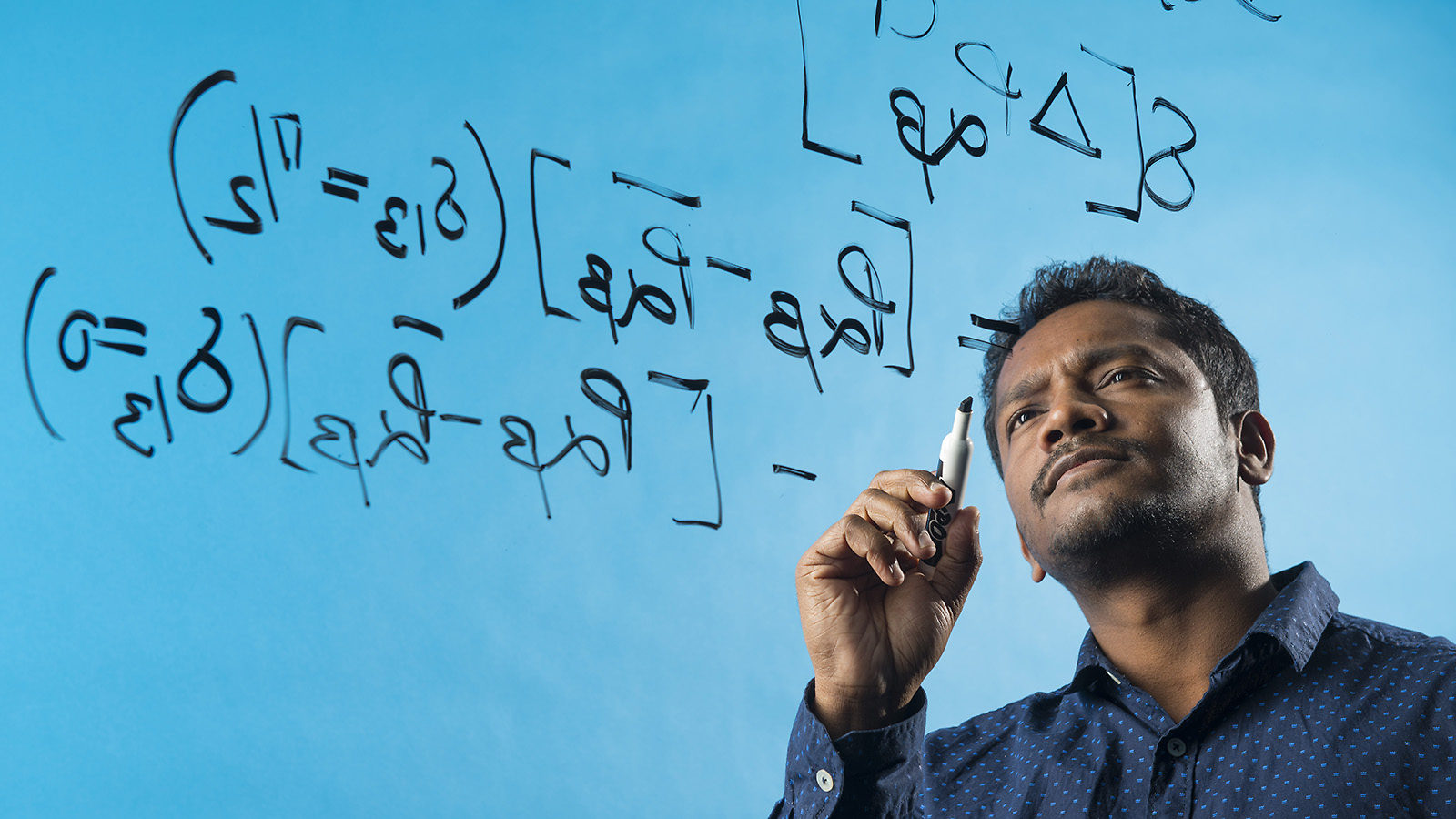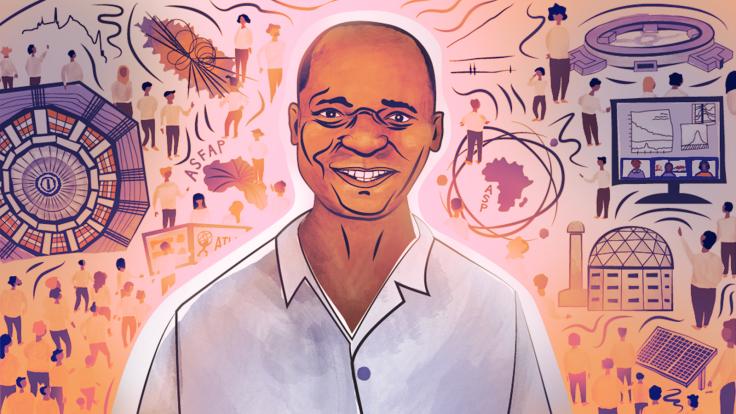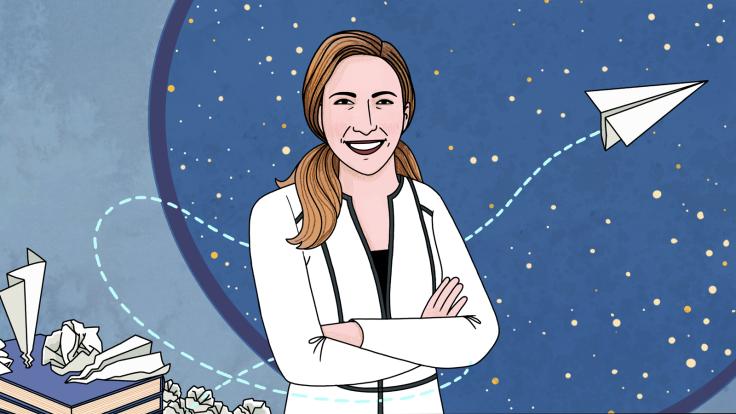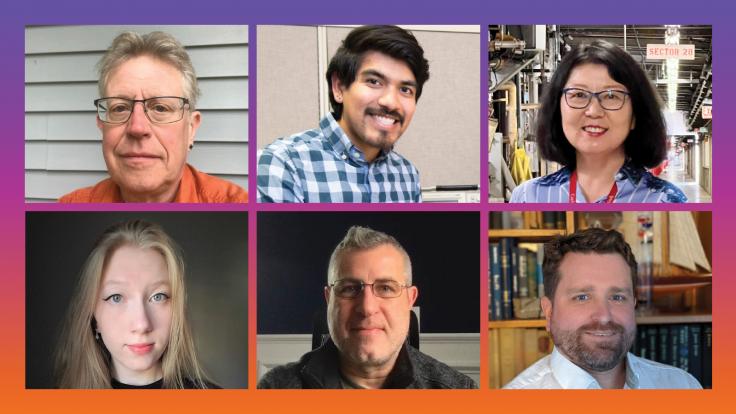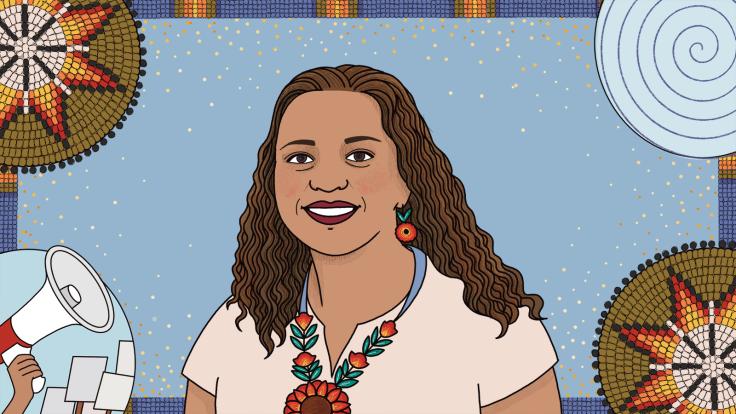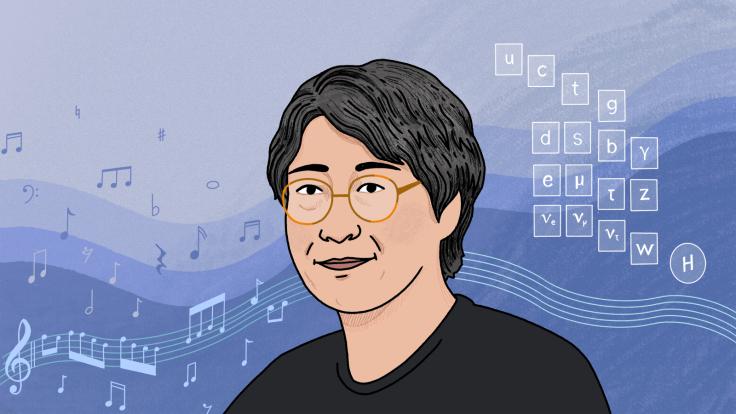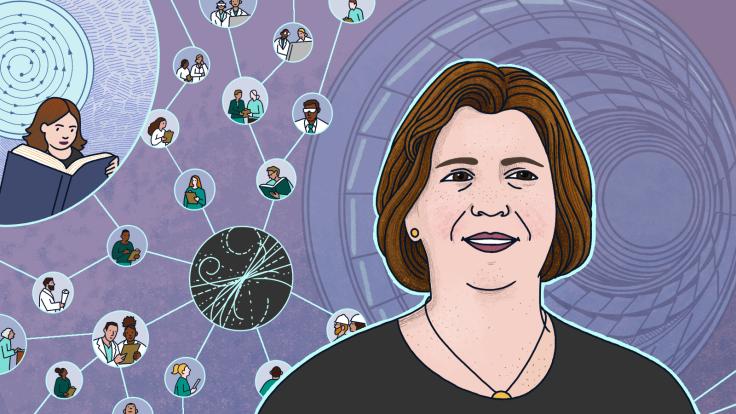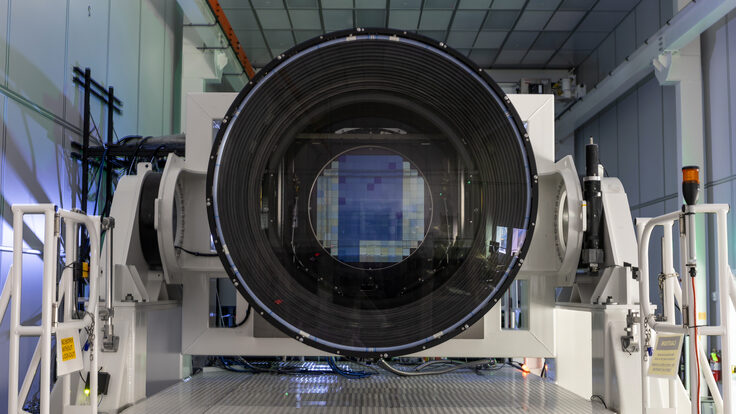How do you build the biggest physics experiment ever constructed in the United States? With a lot of help from international friends.
Symmetry writer Sarah Lawhun checked in with one of those international partners: graduate student Jogesh Rout of Jawaharlal Nehru University in New Delhi, India. Rout discussed the experience of taking part in the Long-Baseline Neutrino Facility, the supporting infrastructure crucial to the Deep Underground Neutrino Experiment.
DUNE, a global project hosted by the US Department of Energy’s Fermi National Accelerator Laboratory, will send the world’s most intense high-energy beam of neutrinos 800 miles from Illinois to the world’s most advanced, mile-deep neutrino detectors in South Dakota. The goal? To study how the neutrinos change—oscillating from one type to another—to better understand how the mysterious particles might have influenced the evolution of our universe.
The experiment has more than 1000 researchers on board from 31 countries, a collaboration that scientists expect to continue to grow. Rout, a theoretical physicist originally from Odisha, India, received the second-ever Rajendran Raja Fellowship aimed at bringing students from India to conduct research at Fermilab.
What do you work on for LBNF?
My work is on the theory of high-energy physics. I predict what will happen to neutrinos in the beam made here at Fermilab as they travel, calculating how they oscillate. I also look at neutrino and antineutrino asymmetry, called CP violation, in both standard interactions and new physics scenarios that go beyond what we currently know about neutrinos.
Before this fellowship, had you ever been to Fermilab?
This is my first time. It’s actually my first time going anywhere outside India. Physics students in India have a dream to come to places like Fermilab or CERN. I’m just excited to be here. I’m like a tourist and want to learn about all the experiments here.
When did you find out that you liked physics?
I remember being interested in math and science from a young age. I was actually the first student to go on to study science in my hometown. In my family, I’m the first person to get a PhD.
I always liked physics and performed well in it, but I come from a very rural area, and even my college was in a rural area. I knew of very few science-related careers.
I had a good teacher and mentor during my bachelor’s degree who guided me, and I discovered my interest around this time. When other students were going on to get jobs, this teacher encouraged me to further my education in physics and get my master’s degree at a university in the city.
What challenges have you faced while getting your PhD?
While getting my bachelor’s, master’s and PhD, which I am in my final year of, there have been ups and downs. Getting a PhD is a difficult path in some respects. Financially it can be difficult. One needs commitment to developing their abilities. At times I felt I was not performing up to expectations. I just remembered that I shouldn’t give up because it takes perseverance and hard work.
My brother, Mr. Manguli Rout, has always been there for me as moral support and encouraged me. I’ve been lucky to have teachers to support and guide me, too. My own perseverance and support from my friends and mentors has helped me accomplish what I have. I’ve transformed into a better and stronger person.
What first got you interested in studying neutrinos?
Before graduate school, my exposure to particle physics was very little. I still didn’t know about Fermilab or other institutions that research particle physics outside of India like CERN.
During my master’s at Utkal University, I was taught a course on high-energy physics by very good teachers, Prof. Swapna Mahapatra and Prof. Karmadeva Maharana. They inspired me to take up research in the field of high-energy physics.
After I was selected to receive my PhD at Jawaharlal Nehru University in 2013, I carried out a semester-long research project on neutrino oscillations, doing analytic and numerical computations with Dr. Poonam Mehta. This piqued my interest in neutrino physics, so I joined Dr. Poonam Mehta for my PhD program.
What do you like about studying neutrinos?
I’ve been interested in high-energy physics since my master’s degree, and I’ve always really liked mathematics. My current university has a focus in neutrino theory and high-energy physics. The study of neutrino oscillations is sort of a combination of mathematics and high-energy physics, and since I like both of these, I chose this as my specialty.
Neutrinos are fascinating because they are tiny neutral particles with peculiar properties, produced by a wide variety of sources—solar, atmospheric, reactors and accelerators and more, all with different energies. They’re omnipresent and millions pass through us yet cause no harm. Neutrino physics connects various branches of physics—particle physics, astrophysics and cosmology—making it a more comprehensive study for theory.
What do you hope to discover about neutrinos while working on LBNF?
Some questions in neutrino oscillation physics remain unanswered. We know there are three flavors, electron, muon and tau, which have different energies and display particular behaviors.
Since I’m a theorist, I predict how they will oscillate when they pass through matter. The more precise my calculations are, the more accurately we can make a certain flavor of neutrino for experimental physicists to study. They’ll gather information on the neutrino’s characteristics to solve unknowns like CP violation and mass ordering of the neutrino mass states, which combine to form the neutrino flavors.
One mystery surrounding neutrinos is CP violation. This is where there are different numbers of antineutrinos than neutrinos or they behave differently. We want to study this and hope to solve the mystery of why it occurs. In the process, we could also end up accounting for other unknowns that can reveal more about how the universe works.
What do you hope to accomplish during your fellowship?
I want to learn techniques for making the best possible predictions before DUNE begins. The results of the experiment will be more accurate if I calculate exactly right. These calculations help us better engineer and construct LBNF and overall to understand neutrinos better.
Has anything surprised you about Fermilab?
If you are coming from one line of work, it’s surprising how people work within different departments. For example, theoretical people work independently and often work alone but need to be very precise because everyone else’s work depends on them.
Experimental departments work together and collaborate more. I’ve also been surprised by how fast we move with the calculations. I’ve become faster since working here, which is a good skill to have.
I’m especially surprised by how open everyone has been here. They answer all my questions, are always helpful and inspire me to come up with new ideas.
What is an average day like for you?
My work is split between Fermilab and JNU. At Fermilab, my supervisor is Dr. Laura Fields. At JNU, my PhD advisor is Dr. Poonam Mehta, and we are currently collaborating with Dr. Mary Bishai at Brookhaven National Laboratory, Dr. Mehedi Masud who is a post-doctoral fellow at IFIC-AHEP, Valencia, and two PhD students in our research group on different projects.
This means that while I do many calculations for LBNF work here at Fermilab, I also have a lot of phone calls and Skype meetings with collaborators at my university, which can be at odd times since they are in such different time zones.
Do you work with other international students or students from your university?
There are other Indian students working at Fermilab, but none from my university. I do have a friend here who I met in my master’s degree program. He actually works on NOvA [another neutrino experiment at Fermilab] while I am working on LBNF/DUNE. He’s very supportive of me and my studies and research.
What do you like about working on an international collaboration?
The best part is that you can easily approach anyone in the collaboration and there is so much expertise available. You get ideas from so many different people, and they are all eager to help you learn more and are open to hearing your ideas, too.
I really like the exchange of ideas between such diverse scientists and getting a good platform and facility to do research in. It’s quite competitive, so once you get it, you need to give it your 100 percent to make it a success. Overall, it’s surprising to me how huge the project is and how many experts in the field are working on it.
What have you learned so far?
My computational abilities have really improved. I’m beginning to compute results so I can compare them to actual experimental results later.
I’ve been thinking about the experimental side more than usual to see how theory translates into the experiment. My research is indirectly helping the experiment by ensuring the particles behave exactly how the experimenters want them to.
And I’ve learned how to collaborate and bounce ideas off of other people. The work culture is so diverse around campus. I’m learning to understand the requirements of different work environments and to communicate with all different kinds of people.



